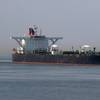As a range of container ship charter indices reach their highest ever levels, the inevitable question must be, how long can this bull run last? Container ship charter rates have reached highest ever levels across a broad range of sizes with Howe Robinson’s container charter index edging up further this week, to another record of 1571.5.
According to the broker’s second quarter container charter market review, “doubters have questioned the sustainability of the charter market since it started to move upwards in January 2002”. In that time, its index has spiraled by almost 250% - from 450. “To put this into perspective,” Howe Robinson explains, “the average cost of chartering a containership has increased from around $6,000 per day to $21,500 per day over 30 months”.
Key reasons for this remarkable surge in rates – from a time when the world’s leading carriers were holding crisis meetings to discuss the possible lay-up of surplus tonnage – include a spell of modest fleet expansion coinciding with a period in which significant manufacturing activity has been outsourced to China and the turnaround in the world’s major economies has stimulated a demand side rebound. “The result has been ongoing undersupply of capacity”, according to the analyst.
Box ships across the board have benefited. Between April and June, average container rates rose by 9% whilst daily charter rates for 580 teu ship jumped 15%, 1000 teu ships 16% and 1700 teu ships 11%, Howe Robinson says. Increases for larger ships have not been as dramatic of late “but even their earnings are remarkable when compared to historical reference points.” A 3000 teu vessel, up 5% over the quarter, is typically earning $26,500 more than in January 2002 and $10,000 a day more than at the last peaks in the summers of 2000 and 1995.
Meanwhile fixing activity has slowed down as charterers seek more forward cover. During the second quarter of 2002, the average length of fixtures was 170 days, according to the broker. In 2003, this had lengthened to 200 days whilst in the first quarter of this year, average duration had risen to 450 days. Forward fixing by charterers has been another recent feature of the market and, says Howe Robinson, “the reducing in [fixing] activity has not resulted in a build-up of spot capacity”.
Looking forward, the broker notes that growth in world trade – merchandise imports and exports – is estimated to have risen by about 6.9% in quarter one this year and 8.9% in quarter two, calculated on an annualized basis. “Given that growth in containerization typically outpaces world trade by some 3-4% this implies a very strong performance”. Cargo volumes for the first three months of the year, usually the weakest quarter, were up by 20% on 2002 levels. However, the cellular orderbook now comprises 45% of the existing fleet which will expand by nearly 9% this year and 10.5% in 2005. By 2006, 25 post Panamax and 68 “super post Panamax” vessels are due to be commissioned. “This is the equivalent of starting an additional 15-19 trans-Pacific loops”, Howe Robinson points out.
“By 2006, the threat of a major storm looks very likely”, the broker warns. The fleet is already expected to grow by 13.5% during that year and, as builders fill in their few remaining slots, this figure could yet rise to 15%. Even if demand stays strong, supply will outpace demand by about 5% and this could result in a sharp market drop of as much as 40%. “Should a capacity overshoot coincide with a slowdown in demand growth (which fate determined in 1998 and 2001) the implications are dire”, declares Howe Robinson “and our index could quickly fall to levels seen at the bottom of the market in March 1999 and January 2002”.
Sponsored Content
Chris-Marine’s solutions help to prolong engine lifetime

Subscribe for
Maritime Reporter E-News
Maritime Reporter E-News is the maritime industry's largest circulation and most authoritative ENews Service, delivered to your Email five times per week










